⌲Search Engine Optimization: How to Write SEO Content That RANKS! ⬆️
You can write the best article in the world, but all your effort and great content will go unnoticed if you didn’t use the proper search engine optimization techniques (SEO). On-page SEO may sound complicated, but you will find it easy once you know what to do. The key to creating good SEO content is to correctly optimize your article with the right keywords.
What is SEO? Without going into too much detail, SEO is the process of optimizing your content in such a way that it attracts traffic (audience) to your website. In this case, it’s the process of writing your articles in such a way that your published articles rank well by a search engine (it’s how you generate organic traffic). The higher rank, the better, as it increases the chances of more clicks, and hence traffic.
How to choose the best keywords for your article
First, let’s talk about the importance of choosing the right keywords, and then we’ll go into the different factors you should consider before creating your keyword list.
Importance of choosing the right keywords
If you have perfectly optimized your SEO article but are still scratching your head on why it isn’t getting any organic traffic, then the problem might lie in the keywords you chose.
When creating SEO content for your website, it’s best to use a keyword tool to see which keywords will prove to be the most useful for you. Many people, mostly beginners, brainstorm content ideas without actually keeping keyword performance in mind. They create their content calendar based on what they think are popular ideas, rather than knowing for sure that they are popular.

The main reason why you’re creating engaging content for your brand is to increase your website traffic, domain authority, and leads, right? If your content isn’t able to achieve that, then it kinds of defeats the purpose. This is why it’s crucial to perform in-depth keyword research and then create your keyword list to create the best SEO content possible.
How to choose the right keywords with Keyword Tool Pro
There are 4 things that you need to keep in mind when deciding which keywords make it to your finalized keyword list for SEO. They are as follows:
1. How popular is the keyword?
Naturally, keyword search volume this is the first thing that you’ll consider when creating your keyword list. If people are not searching for the term, there is no use in creating content around it.
Sometimes you may want to create content around a keyword, but that keyword isn’t popular. You can use Keyword Tool Pro’s ‘related keywords’ feature for this. Even tweaking a word or two by using their synonyms will return different results that might be more popular than before. This way, your intended article’s context remains the same, but it’s just more SEO friendly-content.
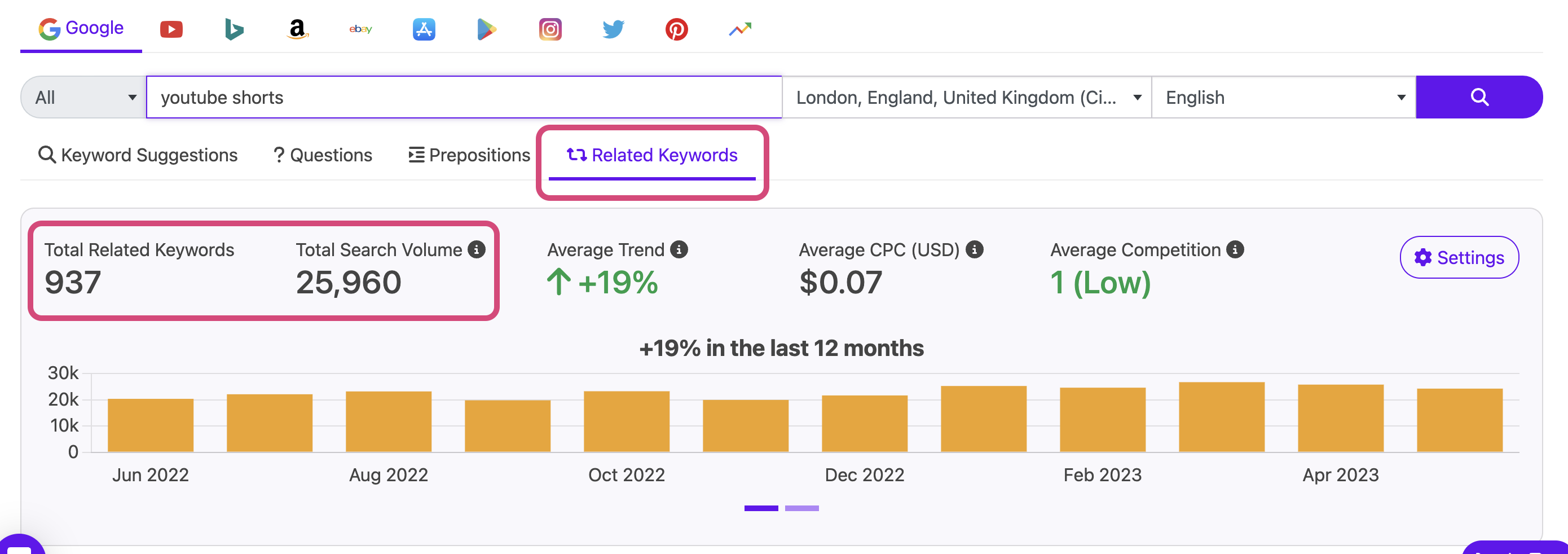
You can also use the ‘related keywords’ feature to come up with new content ideas that are also popular.
2. What’s the keyword’s difficulty?
When you search for a query in Keyword Tool, it returns you a list of hundreds of keywords along with their keyword competition. This is essential to take into account.
If your website has low domain authority, it’s best to choose keywords whose competition lies closer to your domain authority.
Similarly, if your website has a high domain authority, you have more freedom to target high-competition keywords as your website is strong enough to rank for them.

3. How has the keyword performed in the last 12 months?
Many content creators often overlook this, mainly because many keyword research tools don’t offer this feature.
Once Keyword Tool returns results for your keyword, you’ll notice the ‘trend’ feature right beside the ‘search volume’ one. This tells you the search volume for your keyword in the last 12 months and also specifies if it has an increasing trend or decreasing.
You’ll also get to see which month the keyword was most popular, especially if your keyword is seasonal like, Halloween, Christmas, Black Friday, etc. This is also a huge help when creating the content calendar.

It would be best to go for keywords that have an increasing trend so your content will still be relevant when it gets published. For seasonal keywords, you’ll also get to know the exact right time to publish your articles. That is when the keyword will be the most popular to capitalize on it properly.
4. How does the SERP (search engine result page) look for the keyword?
This is also something many creators fail to notice. Even though a keyword might be extremely popular, you should be aware of the searcher’s intent.
The best way to do this is to manually enter your target keyword in the Google search bar and analyze the SERP that follows.
If the results are more related to the content you had in mind, then great, you’re on the right track. However, some popular searches may just be answered by a featured snippet by Google, or the SERP may be dominated by videos instead of articles, like recipes. In these instances, your article might not perform well even if everything is done the right way.
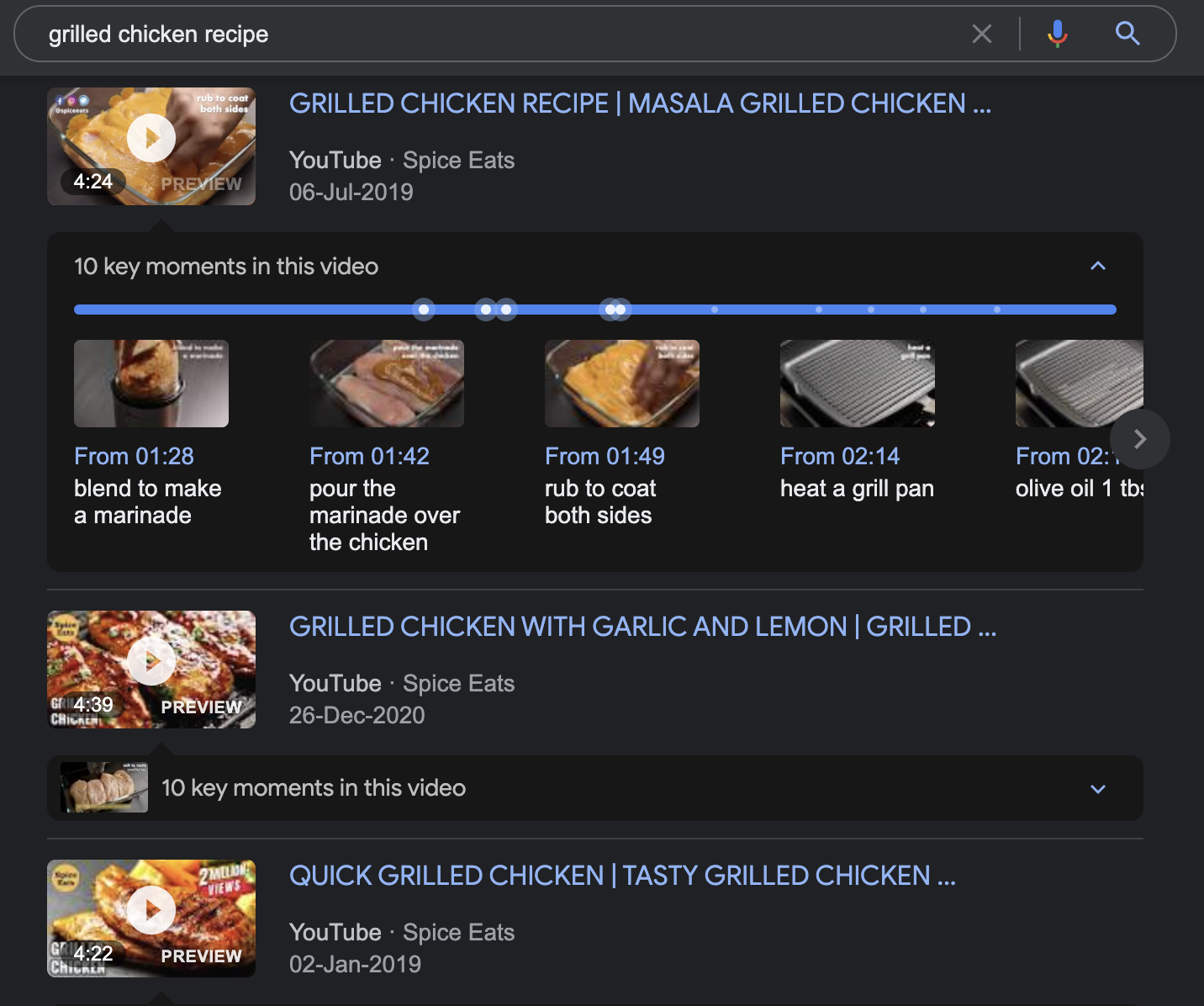
So make sure which information your audience is looking for and in what detail, then choose your keywords accordingly.
So there you have it, the top factors you need to take into consideration when creating your SEO keyword list to get free traffic!
Now let’s move on to how to utilize these keywords to master search engine optimization with your content.
How to write search engine optimized articles
1. Make use of Meta title
There’s a difference between meta title and the title of your article on your website. The meta title is a title that is displayed on the search engine’s result.
Since your meta title can be different from your main title, it’s better to use keyword-rich words. However, try your best to keep it natural and compelling to encourage a high click-through rate from Google.

2. Use Meta description wisely
Now that we’ve gone over Meta titles, let’s discuss meta descriptions. Any time you google something, you might have noticed that among the countless hits google comes up with, it’s followed by a brief description of the content it’s about to display. That’s the meta description, and it plays a significant role in directing organic traffic.
Make sure to write a description that immediately catches the viewer’s attention and encourages that person to click on your website. There is a character limit to this, so it’s best to keep it between 120-150 characters so the whole meta description is visible.

3. Use proper image alt tags
Images and videos can increase the amount of time a person spends on your article, which may help it to rise in rankings. This multimedia presents visual information which cant be displayed in simple words, such as graphs, maps, etc. However, many people do not name those images properly or leave their alt tags empty.
Search engines are not advanced enough to identify images on their own, which is why they depend on the image’s alt tags. Since both the file name and the alt tag won’t be visible to the public, make sure to include your main keywords in them.
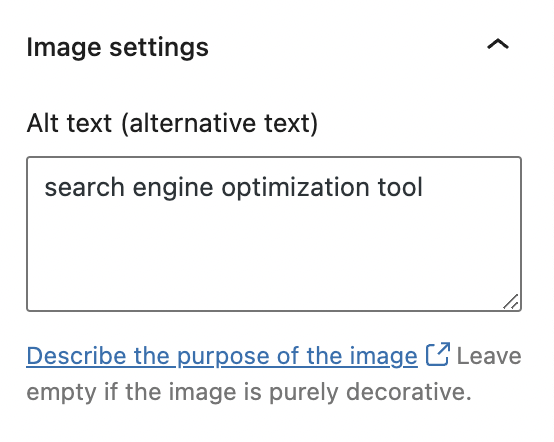
4. Keep an eye on keyword density
We can’t tell you the exact keyword density percentage to have in your article as there are different opinions on it. A good rule of thumb is to integrate your target keywords wherever they can appear naturally in your content. You should never overstuff keywords as they can put off a reader, and they might leave your website, which will result in high bounce rates.
To read more about keyword density in detail, make sure to check out this article we wrote.
5. Make sure to include keywords in subheadings
You have to include your primary and secondary keywords in your subheadings. There is just no debate about it. Subheadings not only organize your SEO content correctly, but they are also great to include keywords in since these keywords hold more weight than regular text.
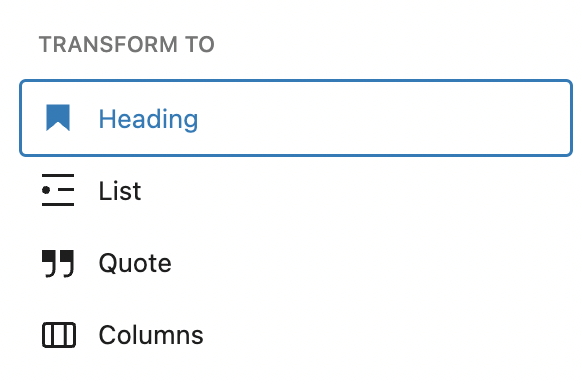
5 SEO content writing tips to start ranking!
Anyone can write an article, but there are specific techniques to apply when writing SEO-optimized articles. Don’t worry though, they are straightforward, and we’ll be walking you through some of the best practices
1. Audience comes first, algorithm comes second.
We are not writing for the search engines’ algorithm. We are writing for actual people. Try to make your SEO content as engaging as possible so your audience stays for long, which will help your ranking.
At the same time, we can’t forget about the keywords! It’s better to include your main keyword in your title and subheadings, and once again, avoid spamming them as it becomes tough to keep your articles interesting.
2. Decide on the length of your article
There has been much research and experiments done on the algorithm used by search engines. One of the most common results was that the bigger the content, the higher it ranks. That’s because longer articles register as a more in-depth guide as compared to short ones.

But keep in mind nobody will read your entire article if it’s irrelevant to the searcher’s intent. Don’t include random content just for the sake of making your article lengthy.
3. Include Facts and Figures
As previously mentioned, search engine algorithms tend to favor more in-depth guides. By using case studies, you drastically improve the traffic you generate to your website. Make sure to present your case studies so that it doesn’t come off as marketing and make them sound interesting.
The best case study you can offer to your audience inspires people by using a success story as these tend to rank higher in the algorithm.
4. Make use of long-tail keywords
With Keyword Tool Pro, you can access the ‘prepositions’ feature, which gives you a list of related long-tail keywords that people are searching for. You can have these sprinkled out in your article to create even better SEO-optimized content as it increases the overall relevancy of your article.
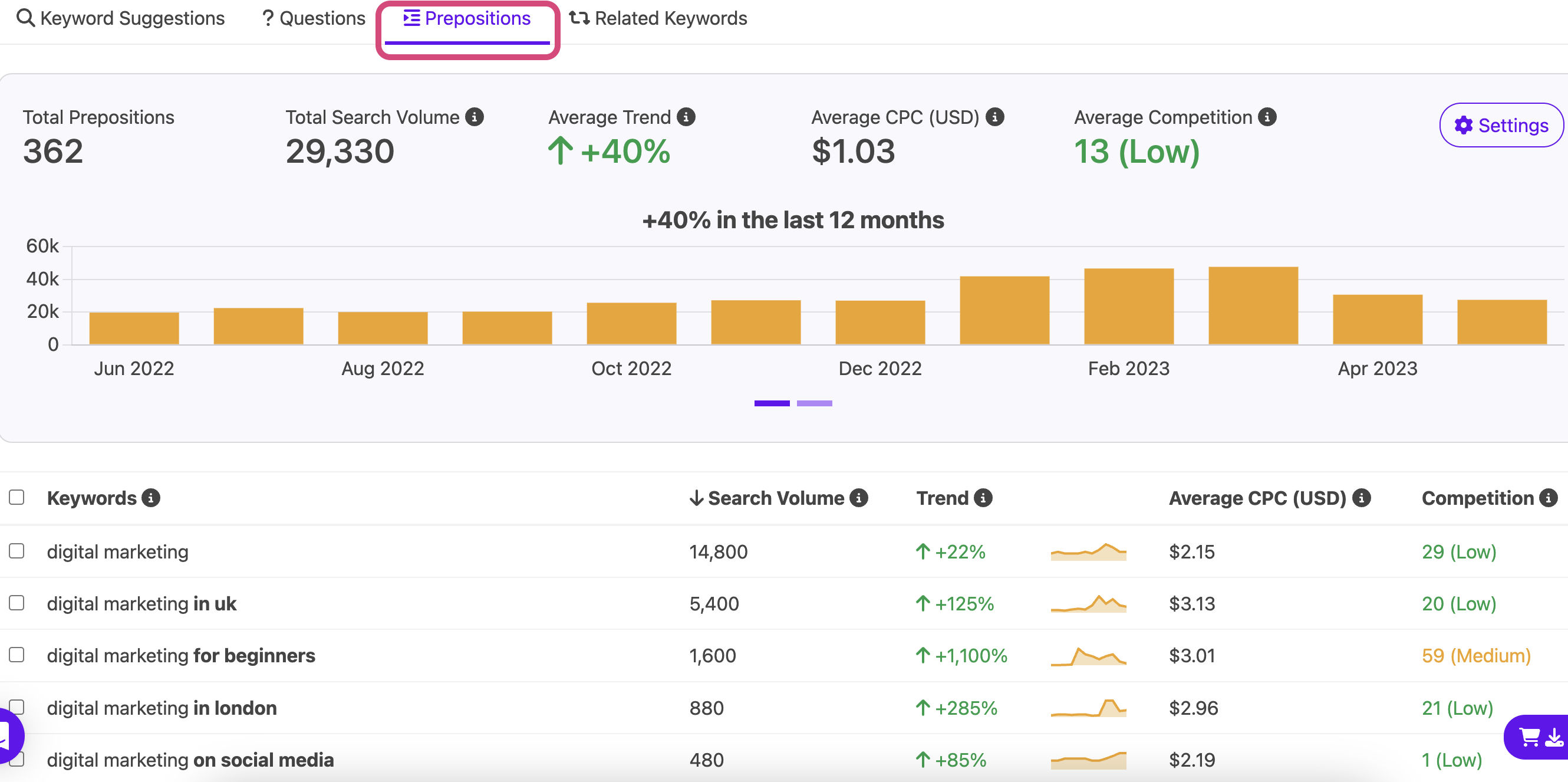
5. Good Storytelling
We are here to attract people, not bots. Good storytelling will help improve organic ranking, which leads to increased traffic. Everyone loves a good story. If you can implement it into your article, you will attract more attention, and more attention means more traffic which is our primary goal.
Try to keep your tone conversational so it constantly engages your audience. Break up large paragraphs into smaller ones and make sure your sentences are also small and easy to read. You can also break up continuos text by adding relevant and engaging images or videos that provide more value to the reader.
There you have it, 5 SEO content writing best practices!
You’re ready to do search engine optimization!
Being able to use search engine optimization the right way is an extremely useful skill. Since there will be many articles similar to yours, SEO optimization plays an important part in ensuring that your content ranks higher among others.